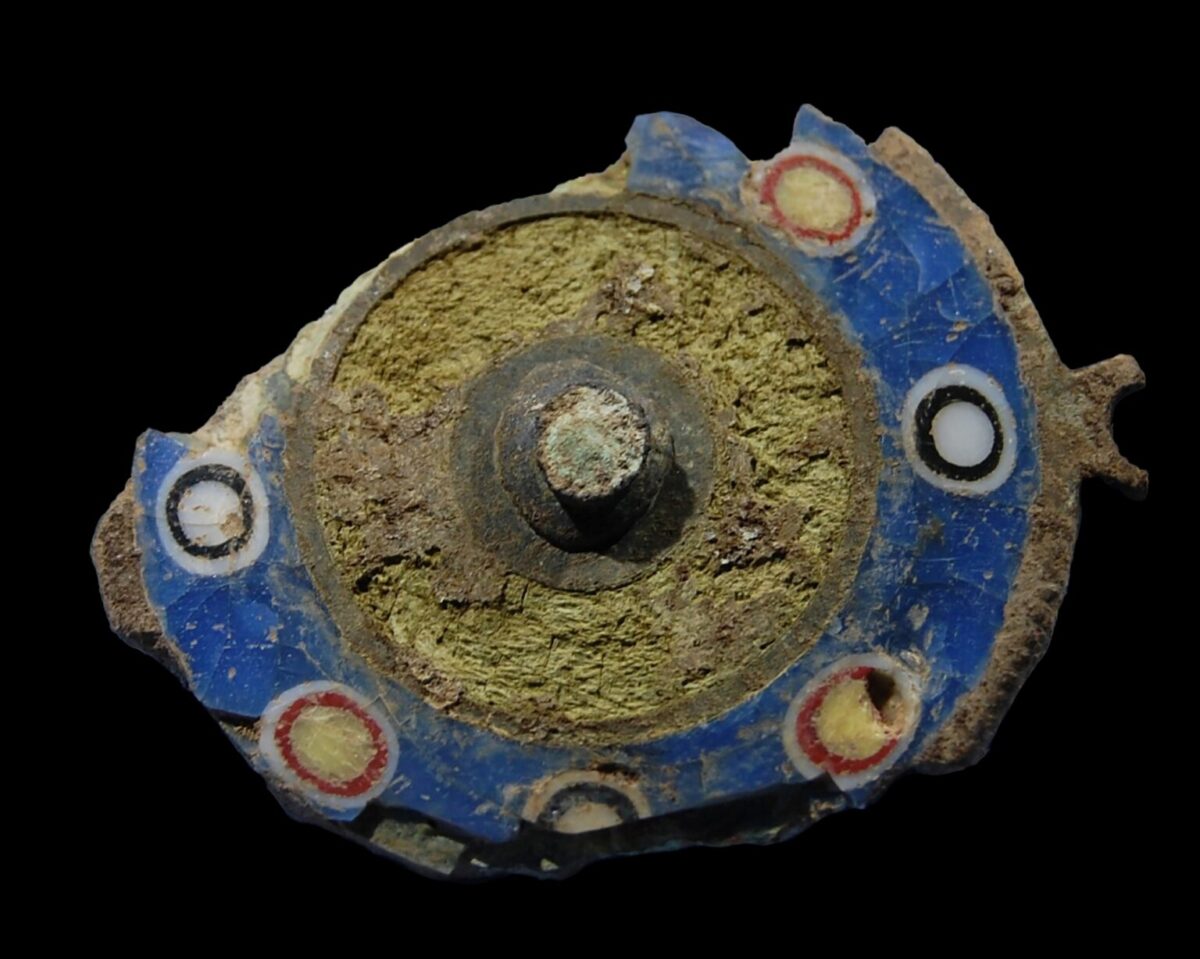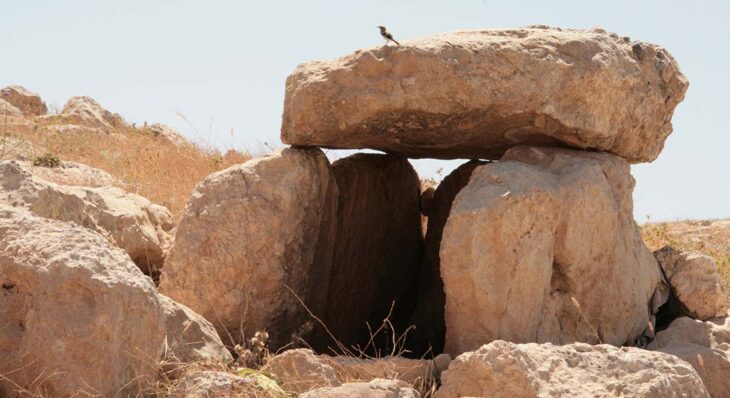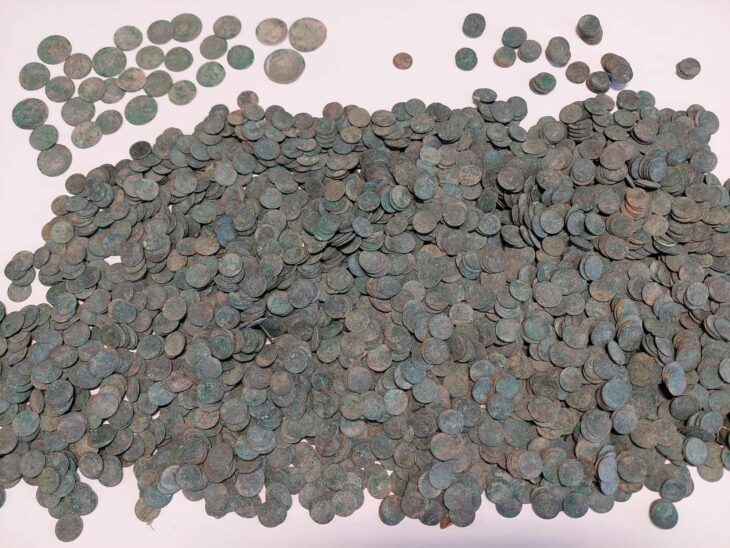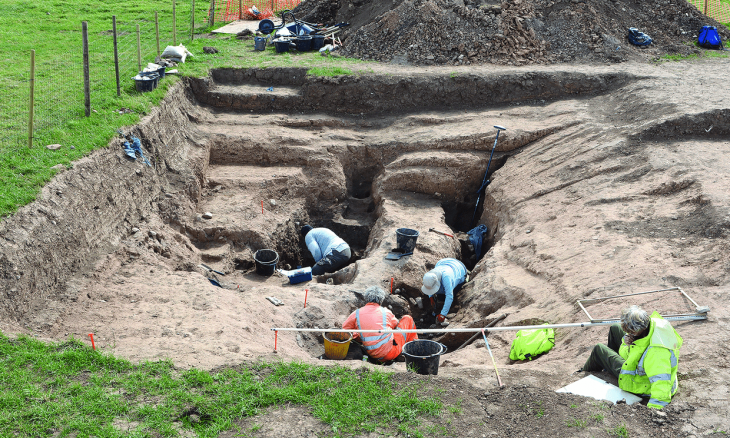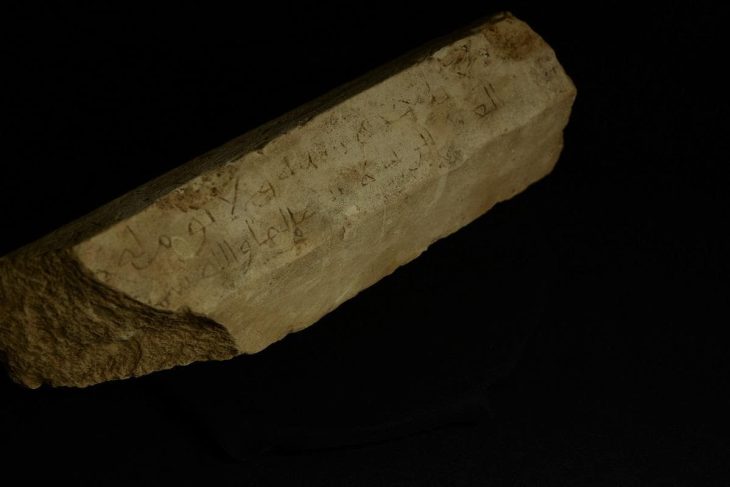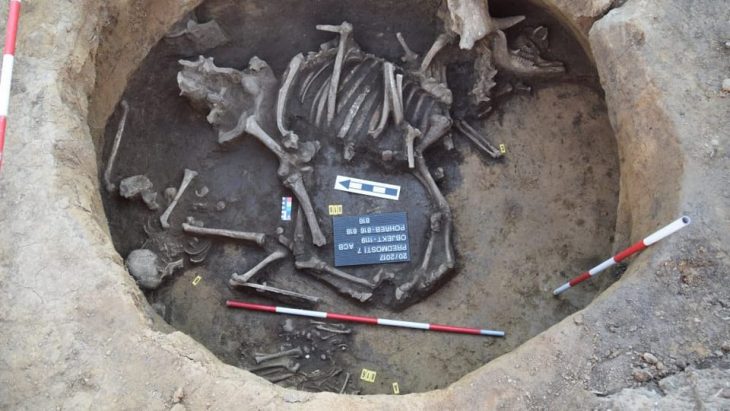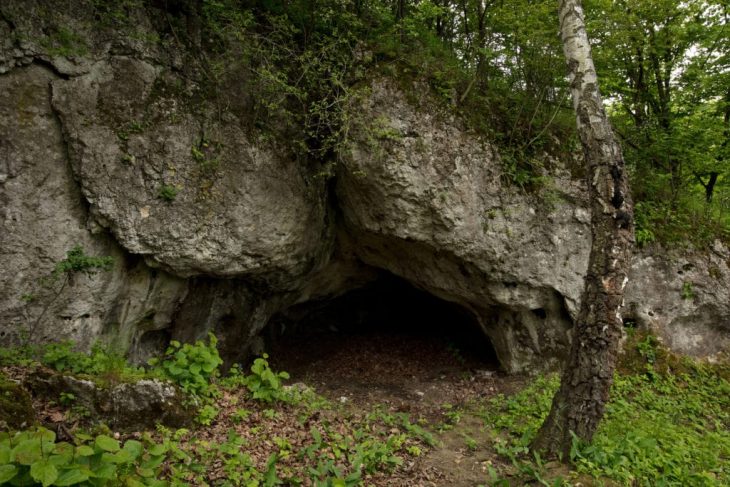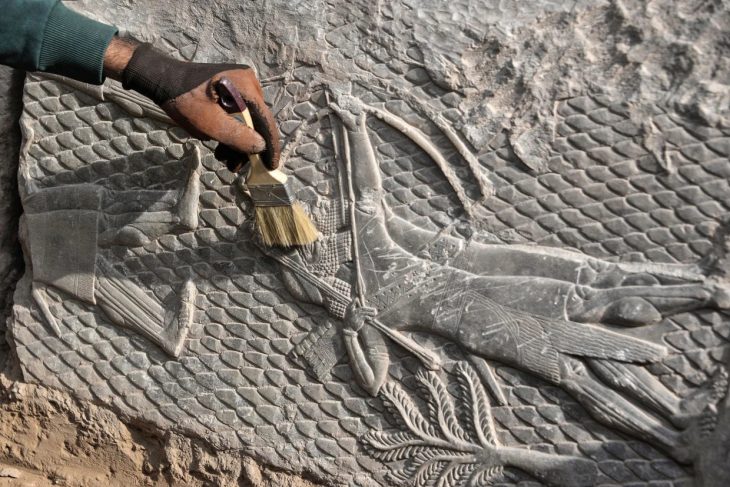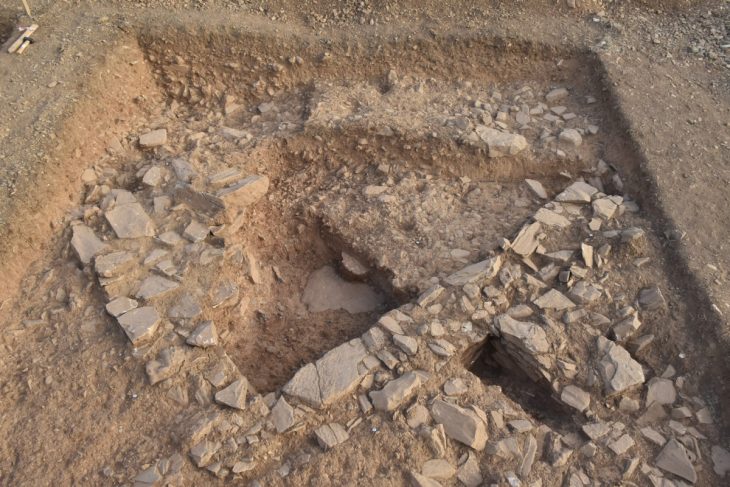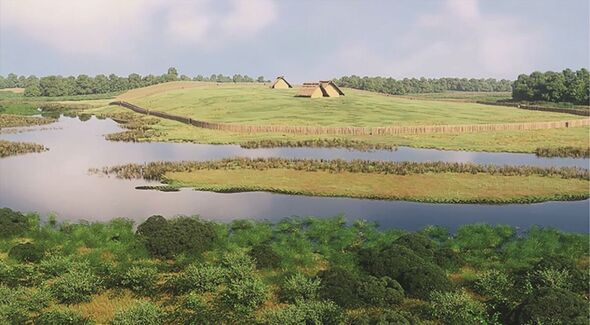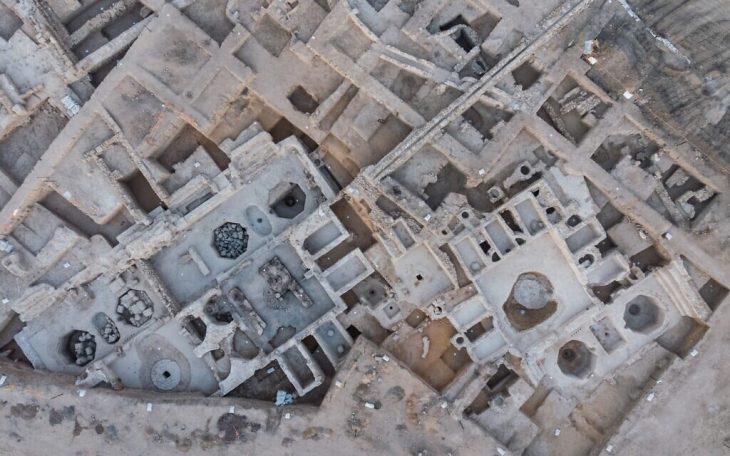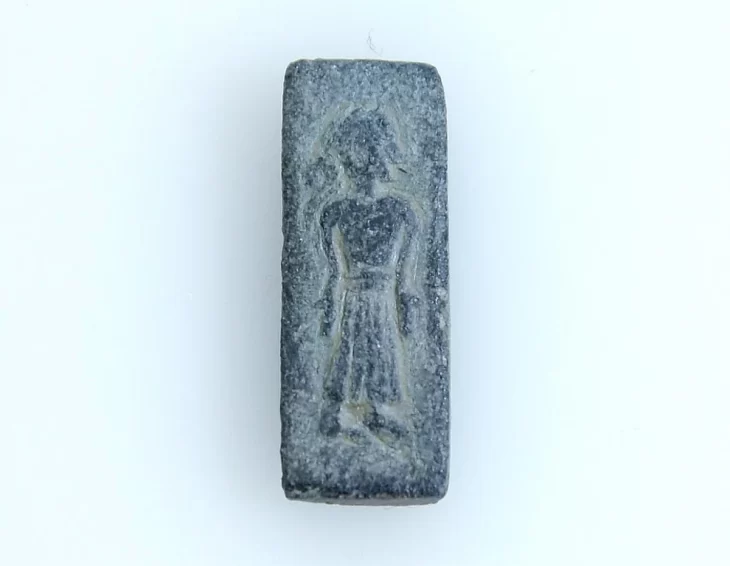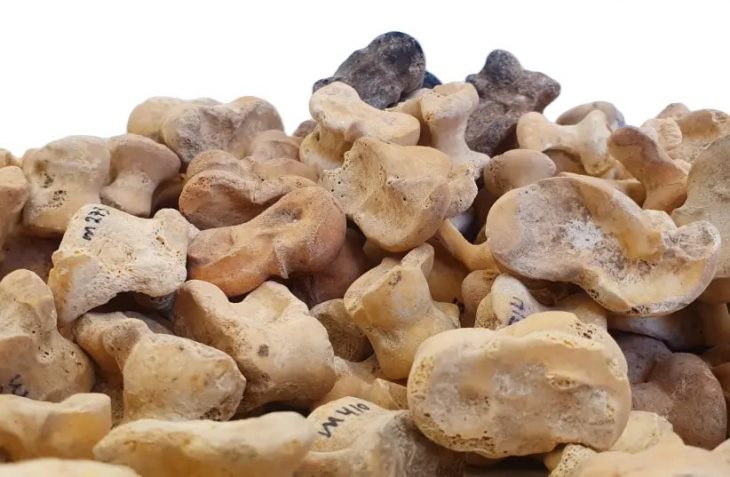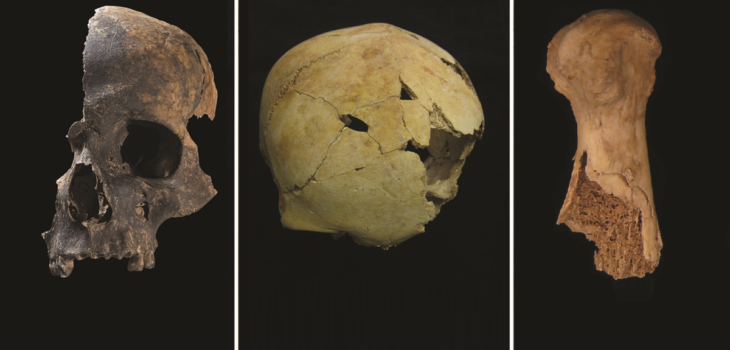Recent research by GUARD Archaeology highlights a rare enamelled Roman brooch, suggesting its potential use in a “foundation offerings ritual” at an Iron Age fort in Scotland, and sheds light on the interactions between local Britons and the Roman army in the late second century AD.
Excavations at the William Grant & Sons Girvan Distillery in South Ayrshire in 2020 revealed an Iron Age settlement from a time when southern Scotland had fallen out of Roman control, with GUARD Archaeologists uncovering the remains of a significant timber roundhouse encircled by a robust wooden palisade and a large gated entranceway, likely indicating the residence of a prosperous farming family.
During the excavation, GUARD Archaeologists unearthed an enamelled bronze brooch from the foundation trench of the timber palisade, a notable find due to its distinctly Roman origin rather than local craftsmanship. Researchers are now hypothesizing about the brooch’s intended use and how it came to be in Scotland without ever being worn.
Jordan Barbour, one of the co-authors of the report, stated that the exotic brooch and similar items typically date to the late second century AD and are most commonly found along the borders of the Roman Empire, particularly in eastern Gaul, Switzerland, and the Rhineland. He noted that the distribution pattern of these brooches indicates their popularity among members of the Roman military forces, suggesting that the brooch likely arrived north of Hadrian’s Wall on the cloak of a Roman soldier assigned to garrison the Empire’s northernmost frontier.

Jordan Barbour stated that while it is difficult to determine the exact reason for the deposition of the brooch within the palisade trench, ritualized foundation offerings are observed across many cultures, typically performed to grant protection to a household, which remains a possibility in this case. He noted that there are several plausible scenarios regarding how the brooch ended up at the site. It is the only Roman artifact recovered from the location, and if the inhabitants had established regular trade with Roman Britain, a greater variety of Roman objects would be expected; however, the context is distinctly native. Therefore, it is more likely that the brooch was obtained through ad hoc exchanges with Roman troops operating north of Hadrian’s Wall, or possibly even taken as a trophy in battle.
📣 Our WhatsApp channel is now LIVE! Stay up-to-date with the latest news and updates, just click here to follow us on WhatsApp and never miss a thing!!
The Curragh Iron Age dwelling was located on a rocky plateau, characterized by a steep escarpment that restricted access from the north. This strategic positioning, along with the strong timber palisade surrounding the dwelling, suggests that defensive concerns played a significant role in its placement. Although there were no contemporary Roman forts in the vicinity following the abandonment of the Antonine Wall earlier in the second century AD, the presence of a Roman marching camp from the first century AD, located approximately two kilometers to the southwest, indicates a history of military activity in the area. It is likely that conflicts between local Britons and Roman soldiers were a recurring aspect of Rome’s intermittent occupation of south-west Scotland.
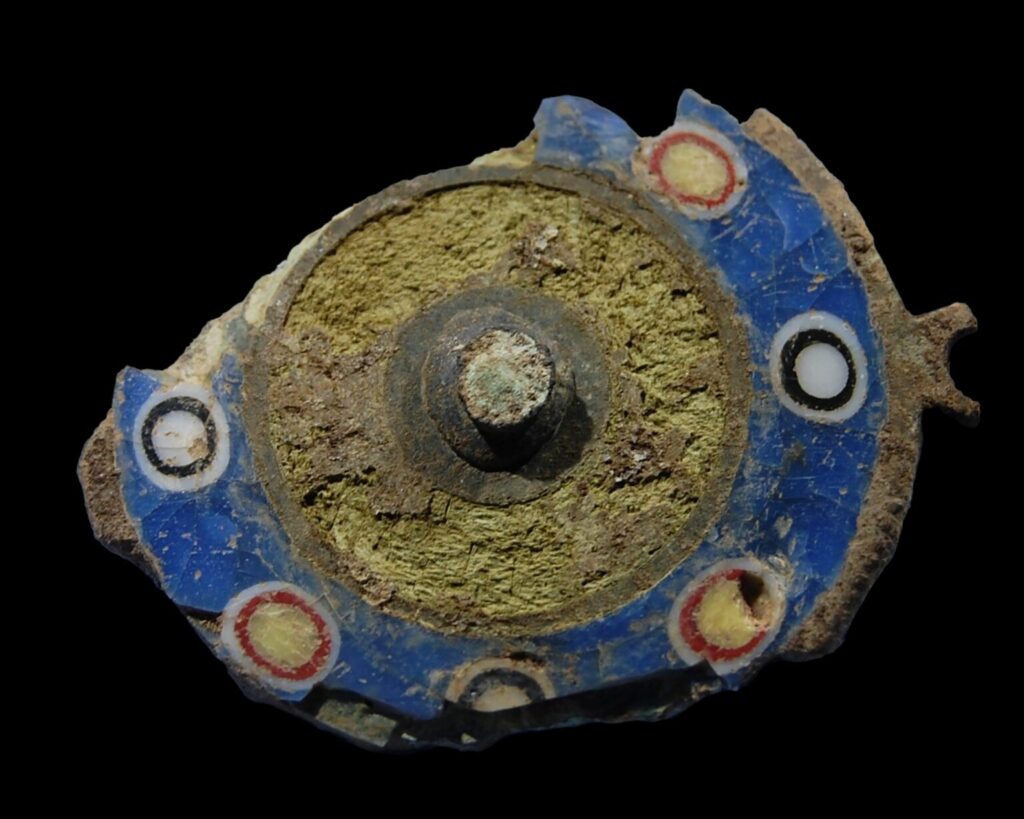
In addition to the palisaded roundhouse, GUARD Archaeologists uncovered other significant archaeological features at the Curragh. The enduring attractiveness of the plateau was highlighted by the discovery of an earlier unenclosed roundhouse, which has been radiocarbon dated to around the seventh century BC, predating the Roman arrival in Britain by many centuries. Furthermore, evidence of even earlier habitation was found in the form of pottery dating back to the early Neolithic period, associated with a large timber monument constructed between 3,700 and 3,500 BC.
ARO59 A Neolithic Monument, Iron Age Homesteads and Early Medieval Kilns: excavations at the Curragh, Girvan by Jordan Barbour and Dave McNichol is freely available to download from Archaeology Reports Online.

